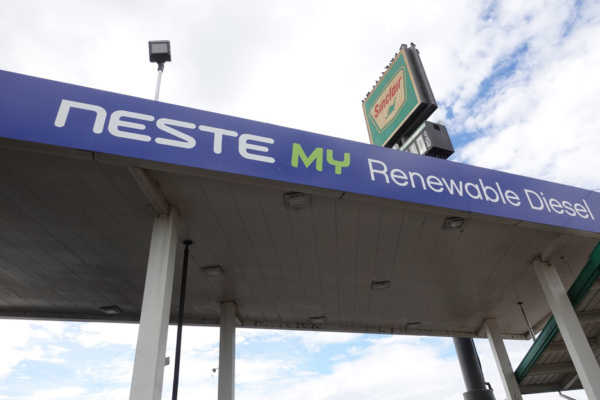Use of renewable diesel—a clean fuel option that reduces greenhouse gas emissions and meets the same specifications as petroleum diesel—is increasing. Renewable diesel can be used as a drop-in fuel, blended with petroleum diesel and blended with biodiesel in various amounts. As a drop-in fuel there are little to no modifications needed to fueling equipment or storage or the diesel engine.
“Most West Coast retailers are using or looking to use renewable diesel at their locations because it’s a drop in. There aren’t modifications needed on the fueling side or the engine side. You don’t have to blend it,” said Ginger Laidlaw, vice president of the Alternative Fuels Council.
Renewable Identification Numbers, Low-Carbon-Fuel-Standard (LCFS) credits and the Blender’s Tax Credit are currently available incentives.
Currently, renewable diesel fuel is used on the West Coast. “Economically, due to the demand and the LCFS credit, until logistical hurdles can be improved and/or more incentives are available in other parts of the U.S., it will be predominantly used on the West Coast,” Laidlaw said, adding that supply is an issue in other parts of the country. “The demand and the incentives are what is driving everyone to ship everything to the West Coast.”
Renewable diesel, in comparison to biodiesel, has an improved cetane number, up to 65. It’s cold flow improver is impressive, it has decreased microbial growth, decreased phase separation of water, and reduced NOx and CO2.
Renewable diesel fuel can be produced from various biomass sources, including vegetable oils, animal fats, greases, algae, crop residues, woody biomass and dedicated energy crops.
The majority of RD is being co-produced within a refinery, and full-scale RD plants are starting to be constructed. However, Laidlaw said it will take some time before this fuel will be produced in larger volumes and available in other parts of the U.S.
Renewable diesel doesn’t have a restriction on blending, so renewable diesel can be blended with biodiesel. There is also flexibility in how much of a percentage operators blend. “It may be advantageous to do a R80/B20 blend to maximize benefits/discount fuel,” Laidlaw said. “The question there would be if and when you do that, who gets the bio credits.”
While the Blender’s Tax Credit is available on R-99, Laidlaw said it is typically being captured upstream. “The credits are staying upstream, but the retailers are getting the discounted fuel. ULSD and RD are similar because that upstream party has captured those incentives,” Laidlaw said. “For some reason on the RD side, it seems it is more advantageous to take the discounted fuel.”
The Differences Between Renewable Diesel and Biodiesel
Renewable diesel and biodiesel are both high-quality fuels made from oils and fats and are both eligible for RFS and low- carbon fuel standard programs, but they are two very different fuels.
Renewable diesel, previously known as green diesel, is a hydrocarbon produced most often by hydrotreating, which is similar to how petroleum refineries create traditional diesel fuel. It meets the ASTM D975 specification for petroleum diesel, has a lower cloud point, and therefore better cold weather handling properties than biodiesel, and can be transported in existing pipelines.
Biodiesel is made using a process called transesterification, which can be less capital-intensive than the hydrotreating process that produces renewable diesel. Biodiesel generally requires separate storage and handling and is blended in varying amounts in diesel fuel.
Subscribe to Updates
NATSO provides a breadth of information created to strengthen travel plazas’ ability to meet the needs of the travelling public in an age of disruption. This includes knowledge filled blog posts, articles and publications. If you would like to receive a digest of blog post and articles directly in your inbox, please provide your name, email and the frequency of the updates you want to receive the email digest.

